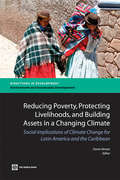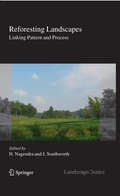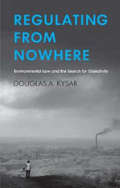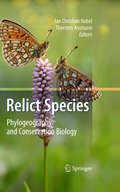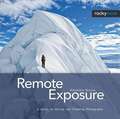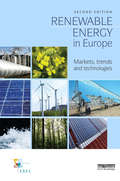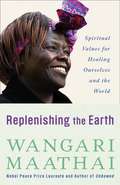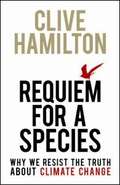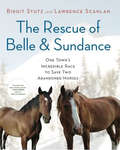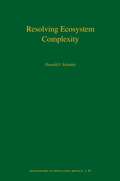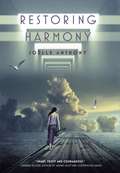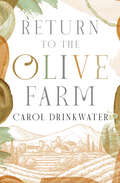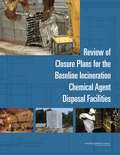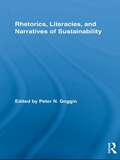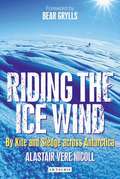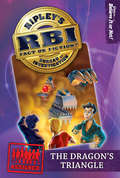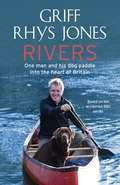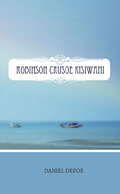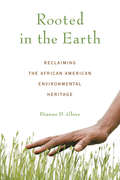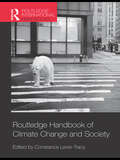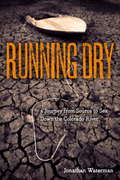- Table View
- List View
Reducing Poverty, Protecting Livelihoods, and Building Assets in a Changing Climate
by Dorte VernerClimate change is the defining development challenge of our time. More than a global environmental issue, climate change and variability threaten to reverse recent progress in poverty reduction and economic growth. Both now and over the long run, climate change and variability threatens human and social development by restricting the fulfillment of human potential and by disempowering people and communities in reducing their livelihoods options. Communities across Latin America and the Caribbean are already experiencing adverse consequences from climate change and variability. Precipitation has increased in the southeastern part of South America, and now often comes in the form of sudden deluges, leading to flooding and soil erosion that endanger people's lives and livelihoods. Southwestern parts of South America and western Central America are seeing a decrease in precipitation and an increase in droughts. Increasing heat and drought in Northeast Brazil threaten the livelihoods of already-marginal smallholders, and may turn parts of the eastern Amazon rainforest into savannah. The Andean inter-tropical glaciers are shrinking and expected to disappear altogether within the next 20-40 years, with significant consequences for water availability. These environmental changes will impact local livelihoods in unprecedented ways. Poverty, inequality, water access, health, and migration are and will be measurably affected by climate change. Using an innovative research methodology, this study finds quantitative evidence of large variations in impacts across regions. Many already poor regions are becoming poorer; traditional livelihoods are being challenged in unprecedented ways; water scarcity is increasing, particularly in poor arid areas; human health is deteriorating; and climate-induced migration is already taking place and may increase. Successfully reducing social vulnerability to climate change and variability requires action and commitment at multiple levels. This volume offers key operational recommendations at the government, community, and household levels with particular emphasis placed on enhancing good governance and technical capacity in the public sector, building social capital in local communities, and protecting the asset base of poor households.
Reforesting Landscapes
by Jane Southworth Harini NagendraThe 21st century has seen the beginnings of a great restoration effort towards the world's forests, accompanied by the emergence of an increasing literature on reforestation, regeneration and regrowth of forest cover. Yet to date, there is no volume which synthesises current knowledge on the extent, trends, patterns and drivers of reforestation. This edited volume draws together research from leading researchers to explore reforestation and forest regrowth across the world, from multiple dimensions - including ecosystem services, protected areas, social institutions, economic transitions, remediation of environmental problems, conservation and land abandonment - and at different scales. Detailing the methods and analyses used from across a wide range of disciplines, and incorporating research from North, South and Central America, Africa, Asia and Europe, this groundbreaking book provides a global overview of current trends, explores their underlying causes and proposes future forest trajectories. The first of its kind, the book will provide an invaluable reference for researchers and students involved in interdisciplinary research and working on issues relevant to the biophysical, geographic, socioeconomic and institutional processes associated with reforestation.
Regulating from Nowhere: Environmental Law and the Search for Objectivity
by Douglas A. KysarDrawing insight from a diverse array of sources -- including moral philosophy, political theory, cognitive psychology, ecology, and science and technology studies -- Douglas Kysar offers a new theoretical basis for understanding environmental law and policy. He exposes a critical flaw in the dominant policy paradigm of risk assessment and cost-benefit analysis, which asks policymakers to, in essence, "regulate from nowhere. " As Kysar shows, such an objectivist stance fails to adequately motivate ethical engagement with the most pressing and challenging aspects of environmental law and policy, which concern how we relate to future generations, foreign nations, and other forms of life. Indeed, world governments struggle to address climate change and other pressing environmental issues in large part because dominant methods of policy analysis obscure the central reasons for acting to ensure environmental sustainability. To compensate for these shortcomings, Kysar first offers a novel defense of the precautionary principle and other commonly misunderstood features of environmental law and policy. He then concludes by advocating a movement toward environmental constitutionalism in which the ability of life to flourish is always regarded as a luxury wecanafford.
Relict Species
by Jan Christian Habel Thorsten AssmannThis book provides an overview of the importance of research on relict species and presents conclusions and findings on the conservation of these species. There are relict species and populations from nearly all plant and animal groups and they contribute substantially to biodiversity across the globe. Current diversity patterns are influenced by both historic and recent ecological conditions. Relict species are of particular importance, as they usually suffer more severely from human activities than do non-relict populations; the situation is also potentially critical, as many relict species and populations have the potential to colonize large areas when the climate changes. The more than 27 contributions in this book highlight the history and status of today's relict species and populations and apply molecular genetics, morphometry, modelling and conservation biology to describe the past and present situations and to predict future trends of relict species' distribution.
Remote Exposure: A Guide to Hiking and Climbing Photography
by Alexandre BuisseThough many hikers and climbers carry cameras with them, they often come away feeling disappointed because their images fail to visually translate their experiences. In Remote Exposure Alexandre Buisse goes beyond the mere basics of photography and gives you the tools needed to create images that are not only of good technical quality but that are compelling as well. This book will guide you through the various options for equipment, since the requirement for lightweight gear that is able to withstand cold, adverse weather conditions presents unique challenges. Learn about the importance of having an efficient carrying system and a logical, planned workflow. Throughout the book you will find advice on where to point your camera and how to compose a strong image. Included are specific requirements for rock climbing, hiking, mountaineering, and camping. More advanced photographic topics are also covered such as digital capture and optimization techniques like high dynamic range imaging (HDRI), panoramic stitching, and how to achieve excellent results without a tripod. The pages are filled with over 100 stunning images captured by Buisse as he hiked and climbed through mountain ranges on three continents. Photographers of all levels and those who just appreciate beautiful images are sure to be inspired by this book. Foreword by Cory Richards (member of the historic climbing expedition that reached the summit of Gasherbrum II in winter).
Renewable Energy in Europe: Markets, Trends and Technologies
by European Renewable European Renewable Energy CouncilHow can the European Union meet its binding 20% renewable energy target in final energy consumption by the year 2020? Which sources offer the best prospects for realizing this goal? These are the questions answered by this key book which analyses the current situation of renewable energy in Europe, examines the latest technological, financial and economic developments, and outlines ways in which the renewable energy market can be developed. The book is divided into sections examining the integration of renewable energy, electricity, heating and cooling as well as biofuels. All the main technologies are covered, with exploration of: ' benefits and applications ' costs and prices ' markets and installed capacity ' policy instruments ' key countries and success stories ' targets and long term potential This will be essential reading for policy decision-makers at all levels and to all those involved in the development of the renewable energy industry.
Replenishing the Earth Spiritual Valued for Healing Ourselves and the World
by Wangari MaathaiAn impassioned call to heal the wounds of our planet and ourselves through the tenets of our spiritual traditions, from a winner of the Nobel Peace Prize. It is so easy, in our modern world, to feel disconnected from the physical earth. Despite dire warnings and escalating concern over the state of our planet, many people feel out of touch with the natural world. Nobel laureate Wangari Maathai has spent decades working with the Green Belt Movement to help women in rural Kenya plant--and sustain--millions of trees. With their hands in the dirt, these women often find themselves empowered and "at home" in a way they never did before. Maathai wants to impart that feeling to everyone, and believes that the key lies in traditional spiritual values: love for the environment, self-betterment, gratitude and respect, and a commitment to service. While educated in the Christian tradition, Maathai draws inspiration from many faiths, celebrating the Jewish mandate tikkun olam ("repair the world") and renewing the Japanese term mottainai ("don't waste"). Through rededication to these values, she believes, we might finally bring about healing for ourselves and the earth.
Requiem for a Species: Why We Resist the Truth About Climate Change
by Clive HamiltonClive Hamilton offers a compelling description of a world transformed by climate change and explains why we won't stop climate change even though we know it will destroy us. This book does not set out to raise the alarm again to encourage us to take radical measures to head off climate chaos. There have been many books and reports in recent years explaining just how dire the future looks and how little time we have left to act. This book is about why we have ignored those warnings, and why it may now be too late. It is a book about the frailties of the human species as expressed in both the institutions we built and the psychological dispositions that have led us on the path of self-destruction. It is about our strange obsessions, our hubris, and our penchant for avoiding the facts. It is the story of a battle within us between the forces that should have caused us to protect the Earth, "our capacity to reason and our connection to Nature "and those that, in the end, have won out "our greed, materialism and alienation from Nature. And it is about the 21st century consequences of these failures.
The Rescue of Belle and Sundance: One Town's Incredible Race to Save Two Abandoned Horses (A Merloyd Lawrence Book)
by Lawrence Scanlan Birgit StutzIn December 2008, snowmobilers spot two abandoned horses high in the Canadian Rockies. Starving and frostbitten, the horses have trampled the ten-foot-deep snow into a narrow white prison. Those who reach them bring hay but also a gun, in case the horses are too far gone. A glint of life in the horses’ eyes earns them the hay. The harrowing yet inspiring story of their near impossible rescue--involving the volunteer efforts of an entire village, first the excavation of a trench six feet deep and over 3280 feet long, and then a nearly 20 mile descent at negative 40 degrees--is sure to be read in one breathless sitting.
Resolving Ecosystem Complexity (Monographs in Population Biology #47)
by Oswald J. SchmitzAn ecosystem's complexity develops from the vast numbers of species interacting in ecological communities. The nature of these interactions, in turn, depends on environmental context. How do these components together influence an ecosystem's behavior as a whole? Can ecologists resolve an ecosystem's complexity in order to predict its response to disturbances? Resolving Ecosystem Complexity develops a framework for anticipating the ways environmental context determines the functioning of ecosystems. Oswald Schmitz addresses the critical questions of contemporary ecology: How should an ecosystem be conceptualized to blend its biotic and biophysical components? How should evolutionary ecological principles be used to derive an operational understanding of complex, adaptive ecosystems? How should the relationship between the functional biotic diversity of ecosystems and their properties be understood? Schmitz begins with the universal concept that ecosystems are comprised of species that consume resources and which are then resources for other consumers. From this, he deduces a fundamental rule or evolutionary ecological mechanism for explaining context dependency: individuals within a species trade off foraging gains against the risk of being consumed by predators. Through empirical examples, Schmitz illustrates how species use evolutionary ecological strategies to negotiate a predator-eat-predator world, and he suggests that the implications of species trade-offs are critical to making ecology a predictive science. Bridging the traditional divides between individuals, populations, and communities in ecology, Resolving Ecosystem Complexity builds a systematic foundation for thinking about natural systems.
Resource Economics
by Jon M. ConradResource Economics is a text for students with a background in calculus and intermediate microeconomics and a familiarity with the spreadsheet software Excel. The book covers basic concepts (Chapter 1), shows how to set up spreadsheets to solve simple dynamic allocation problems (Chapter 2), and presents economic models for fisheries, forestry, nonrenewable resources, and stock pollutants (Chapters 3-6). Chapter 7 examines the maximin utility criterion when the utility of a generation depends on consumption of a manufactured good, harvest from a renewable resource, and extraction from a nonrenewable resource. Within the text, numerical examples are posed and solved using Excel's Solver. Exercises are included at the end of each chapter. These problems help make concepts operational, develop economic intuition, and serve as a bridge to the study of real-world problems in resource management.
Restoring Harmony
by Joëlle AnthonyThe year is 2041, and sixteen-year-old Molly McClure has lived a relatively quiet life on an isolated farming island in Canada, but when her family fears the worst may have happened to her grandparents in the US, Molly must brave the dangerous, chaotic world left after global economic collapse one of massive oil shortages, rampant crime, and abandoned cities. Molly is relieved to find her grandparents alive in their Portland suburb, but they're financially ruined and practically starving. What should've been a quick trip turns into a full-fledged rescue mission. And when Molly witnesses something the local crime bosses wishes she hadn't, Molly's only way home may be to beat them at their own game. Luckily, there's a handsome stranger who's willing to help. Restoring Harmony is a riveting, fast-paced dystopian tale complete with adventure and romance that readers will devour.
Return to the Olive Farm (The Olive Farm Series)
by Carol DrinkwaterAt a small farm in Provence, a woman tries to do her part to save the bees—and the planet—in this stirring, entertaining memoir. After a long research trip, Carol Drinkwater is back home with her husband, Michel, on their olive farm in the south of France. She&’s overjoyed, but also has something serious on her mind: the ecological threats to their own farm—and countless others. The die-off of honey bees has reached crisis levels globally, and Carol is concerned about the state of their hives. Some farmers and scientists believe urgent change is needed to address agricultural techniques that are destroying the planet. But when Carol joins their chorus, it may put their beloved farm in jeopardy. It&’s time for a true commitment—but running an organic farm, the couple soon discovers, is not as simple as it sounds . . .Praise for the Olive Farm series &“Vibrant, intoxicating and heartwarming.&” —Sunday Express &“Spellbinding . . . a must for anyone who dreams of moving to a kinder climate and starting a new life.&” —Choice
Review of Closure Plans for the Baseline Incineration Chemical Agent Disposal Facilities
by National Research Council of the National AcademiesThis book responds to a request by the director of the U.S. Army Chemical Materials Agency (CMA) for the National Research Council to examine and evaluate the ongoing planning for closure of the four currently operational baseline incineration chemical agent disposal facilities and the closure of a related testing facility. The book evaluates the closure planning process as well as some aspects of closure operations that are taking place while the facilities are still disposing of agent. These facilities are located in Anniston, Alabama; Pine Bluff, Arkansas; Tooele, Utah; and Umatilla, Oregon. They are designated by the acronyms ANCDF, PBCDF, TOCDF, and UMCDF, respectively. Although the facilities all use the same technology and are in many ways identical, each has a particular set of challenges.
Rhetorics, Literacies, and Narratives of Sustainability (Routledge Studies in Rhetoric and Communication)
by Peter N. GogginIn this volume, rhetoricians, literacy scholars, and humanists have come together to examine the complex discursive constructions of sustainability. Touching on topics including conservation efforts in specific locales; social and political constructions of rhetorical place and space; community literacy; historical and archival analysis of institutional politics, policies, and practices concerning the environment and economic growth and development; town planning and zoning issues; and rhetorics of environmental remediation and sustainability, this collection of essays provides rhetoricians and environmentalists a window into the complex and often contradictory arena of discourse on sustainability.
Riding the Ice Wind: By Kite and Sledge Across Antarctica
by Alastair Vere NicollAlastair Vere Nicoll joined a team of young men to harness the katabatic winds and kite-surf across Antarctica. This is the story of the first West-to-East traverse of Antarctica and of the crossing of two phases in the author's life from youth into manhood, fantasy into reality.
Río hacia la nada
by Pureza CaneloNavega la velaen el agua del río sin fin.La corriente ensancha su trayecto:es el punto de luz del corazónque abarca un horizonte no visible,más allá del horizonte.
Ripley’s RBI 02: Dragon's Triangle
by Ripley's Believe It Or Not!The coast of Japan is being terrorized by a mysterious creature. The RBI are sent to investigate sightings of red glowing eyes that peer out of sea mists and an enormous beast that breathes fire and tramples cars. A trip to Japan reveals a bizarre inventor and stories of a slumbering sea dragon. Is their mission linked to the old legend of the "Dragon's Triangle" and its tales of disappearing ships?
Rivers: One Man And His Dog Paddle Into The Heart Of Britain
by Griff Rhys JonesIn punts canoes and rowing boats, Griff Rhys Jones takes us on a tour of Britain's beautiful and extraordinary rivers. He battles through the gorges and waterfalls of Scotland's wild mountains, drifts across the plains of East Anglia and plunges into the Wye, exploring the legends and stories of our rivers on the way. How did man harness the power of water in feats of engineering like the Manchester Ship Canal, or the fountains at Chatsworth pr the weirs of Hertfordshire? What's it like to fall through a canyon in the Highlands, snorkel through a bog, slalom down a rapid or ride the Severn Bore? How were rivers an inspiration for Constable and the hermits of Bridgnorth? Griff investigates the love affair between cities and rivers from Liverpool's Mersey to London's Lea. From reminiscing about childhood holidays on the Suffolk Stour to taking the plunge on a wintry morning in the Tay as it rushes through Perth, Griff shares his person journeys along the river systems of Britain - always accompanied by Cadbury the faithful water dog.
Rooted in the Earth: Reclaiming the African American Environmental Heritage
by Dianne GlaveWith a basis in environmental history, this groundbreaking study challenges the idea that a meaningful attachment to nature and the outdoors is contrary to the black experience. The discussion shows that contemporary African American culture is usually seen as an urban culture, one that arose out of the Great Migration and has contributed to international trends in fashion, music, and the arts ever since. But because of this urban focus, many African Americans are not at peace with their rich but tangled agrarian legacy. On one hand, the book shows, nature and violence are connected in black memory, especially in disturbing images such as slave ships on the ocean, exhaustion in the fields, dogs in the woods, and dead bodies hanging from trees. In contrast, though, there is also a competing tradition of African American stewardship of the land that should be better known. Emphasizing the tradition of black environmentalism and using storytelling techniques to dramatize the work of black naturalists, this account corrects the record and urges interested urban dwellers to get back to the land.
Routledge Handbook of Climate Change and Society (Routledge International Handbooks)
by Constance Lever-TracyAs the time-scales of natural change accelerate and converge with those of society, Routledge Handbook of Climate Change and Society takes the reader into largely uncharted territory in its exploration of anthropogenic climate change. Current material is used to highlight the global impact of this issue, and the necessity for multidisciplinary and global social science research and teaching to address the problem. The book is multidisciplinary and worldwide in scope, with contributors spanning specialisms including agro-forestry, economics, environmentalism, ethics, human geography, international relations, law, politics, psychology, sociology and theology. Their global knowledge is reflected in the content of the text, which encompasses chapters on American, European and Chinese policies, case studies of responses to disasters and of the new technological and lifestyle alternatives that are being adopted, and the negotiations leading up to the Copenhagen conference alongside a preface assessing its outcomes. Starting with an initial analysis by a leading climatologist, key issues discussed in the text include recent findings of natural scientists, social causation and vulnerability, media and public recognition or scepticism, and the merits and difficulties of actions seeking to mitigate and adapt. This accessible volume utilizes a wealth of case studies, explains technical terms and minimises the use of acronyms associated with the subject, making it an essential text for advanced undergraduates, postgraduate students and researchers in the social sciences.
Running Dry
by Jonathan WatermanIn 1869, John Wesley Powell led a small party down the Green and Colorado Rivers in a bold attempt to explore the Grand Canyon for the first time. After their monumental expedition, they told of raging rapids, constant danger, and breathtaking natural beauty of the American landscape at its most pristine.Jon Waterman combines sheer adventure and environmental calamity in this trailblazing cautionary account of his 2008 trip down the overtaxed, drying Colorado. Dammed and tunneled, forced into countless canals, trapped in reservoirs and harnessed for electricity, what once was untamed and free is now humbled, parched, and so yoked to human purposes that in most years it trickles away 100 miles from its oceanic destination.Waterman writes with informal immediacy in this eye-witness account of the many demands on the Colorado, from irrigating 3.5 million acres of farmland to watering the lawns of Los Angeles. He shows how our profligacy and inexorable climate change spark political conflict, and how we can avert this onrushing ecological crisis. As he follows Powell afloat and afoot, Waterman reaches out both to adventure travelers and to scientists, conservationists, environmentalists, and anyone interested in the fragile interplay between nature and humans.
Running Dry: A Journey From Source to Sea Down the Dying Colorado River
by Jonathan WatermanDammed and tunneled, forced into countless canals, trapped in reservoirs and harnessed for electricity, what once was untamed and free is now humbled, parched, and so yoked to human purposes that in most years it trickles away 100 miles from its oceanic destination. Waterman writes with informal immediacy in this eye-witness account of the many demands on the Colorado, from irrigating 3.5 million acres of farmland to watering the lawns of Los Angeles. He shows how our profligacy and inexorable climate change spark political conflict, and how we can avert this onrushing ecological crisis. As he follows Powell afloat and afoot, Waterman reaches out both to adventure travelers and to scientists, conservationists, environmentalists, and anyone interested in the fragile interplay between nature and humans.
Running Dry
by Jonathan WatermanIn 1869, John Wesley Powell led a small party down the Green and Colorado Rivers in a bold attempt to explore the Grand Canyon for the first time. After their monumental expedition, they told of raging rapids, constant danger, and breathtaking natural beauty of the American landscape at its most pristine.Jon Waterman combines sheer adventure and environmental calamity in this trailblazing cautionary account of his 2008 trip down the overtaxed, drying Colorado. Dammed and tunneled, forced into countless canals, trapped in reservoirs and harnessed for electricity, what once was untamed and free is now humbled, parched, and so yoked to human purposes that in most years it trickles away 100 miles from its oceanic destination.Waterman writes with informal immediacy in this eye-witness account of the many demands on the Colorado, from irrigating 3.5 million acres of farmland to watering the lawns of Los Angeles. He shows how our profligacy and inexorable climate change spark political conflict, and how we can avert this onrushing ecological crisis. As he follows Powell afloat and afoot, Waterman reaches out both to adventure travelers and to scientists, conservationists, environmentalists, and anyone interested in the fragile interplay between nature and humans.
